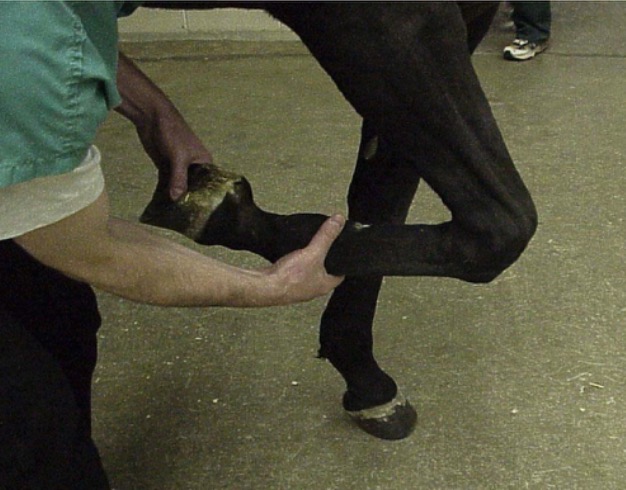
Lameness is defined as an alteration in a horse's gait. The causes can be from pain, neurological, or mechanical. Most causes of lameness are due to a painful condition affecting the joints, ligaments, tendons, bones, and muscles. Although, sometimes there is only subtle changes in a horse's gait or no obvious signs at all, and the only sign is poor performance. These lameness issues may only be felt by the rider with no outward visible sign of lameness to the naked eye on exam. Some lameness may affect multiple limbs or sources which can complicate the examination as well. Finally, lamenesses can be defined as acute(less than 2 to 4 weeks in duration), subacute(4to 6 weeks in duration), and chronic(more than 6 weeks in duration). Our goal is to catch lamenesses in the acute to subacute stages to start treatments and stop the progression of the disease to the best of our ability. This gives us the best chance for healing and return to soundness. Unfortunately, so many lamenesses are chronic in nature due to repetitive trauma to the musculoskeletal system in performance horse's. Although they are chronic there is still many treatments available to help stop the progression of the disease and to improve healing, and to prevent further damage leading to improved soundness for your horse. Regardless of the cause or duration of the lameness it is critical to get your horse seen as soon as possible to identify and treat the source of the lameness.
It is my job as your veterinarian to use my knowledge and expertise to identify the source of your horse's lameness and to determine the most effective and appropriate course of treatment to improve your horse. An accurate diagnosis of the cause of your horse's lameness is crucial for successful treatment. To do this I need to localize the source of the lameness. This is done by getting a thorough history of the lameness, a detailed physical exam, hoof testers, joint flexions, watching the horse at rest and in motion(lunge line, trotting in hand, and ridden) on hard and soft surfaces, and finally diagnostic tests to identify and localize lameness. These tests consist of diagnostic nerve blocks, joint blocks, digital radiography, digital ultrasound, infrared thermography, lameness locator, and possible referral for MRI and Nuclear Scintigraphy(bone scan).
Once the source or cause of lameness is identified a treatment plan is devised to best suit you and your horse. Possible treatments are corrective shoeing, intra articular joint injections of steriods and/or Hyaluronic Acid, IRAP, PRP, stem cell therapy, systemic and topical NSAID's, OSPHOS and Tildren injections, acupuncture, mesotherapy, referral for arthroscopic surgery, and referral for rehabilitation services and physical therapy. With advanced diagnostic equipment and access to the latest therapies in treating equine lameness, I look forward in helping your horse get back to soundness.

